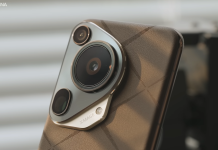Last year, months after getting banned by the United States from using Google’s Android operating system, Huawei launched its own HarmonyOS (aka HongMeng OS) and new devices powered by the same are making their way to the market.
In a recent event in China by Sina Tech, Wang Chenglu, Software Chief at Huawei Consumer Business Software Department, revealed some information about the company’s plan with this new operating system.

He said that the software isn’t a copy of Google‘s Android or Apple‘s iOS which are designed for just smartphones. Unlike those operating systems, the HarmonyOS is made for a wide range of devices, from smartphones to the Internet of Things.
Explaining the reasoning, he adds that smartphone shipments have been declining since the last couple of years and the COVID-19 pandemic has made the market worse. He further adds that the usage of smartphones has reached its saturation point.
While the ecosystem of devices surrounding smartphones is increasing, such as wearables and smart home products, the problem is that almost all of them run on different pieces of software. Huawei is aiming to solve that issue with HarmonyOS, allowing users to have consistency across a range of devices.
EDITOR’S PICK: Qualcomm’s CPUs are about to get even more powerful as it plans to acquire NUVIA
He has also added that contract to what most reports indicate, the HarmonyOS wasn’t developed as an alternative to Android after the Chinese company was restricted from using Google’s system. He says that Huawei started working on its in-house operating system in the year 2016.
HarmonyOS has been developed as a single system to be used across range of hardware — from small to large, consumer to enterprise, and compatibility with different platforms. The company has already launched an updated version of the same, dubbed HarmonyOS 2.0.
The Chinese giant is now hoping to install its own operating system in 200 million devices by the end of this year. Huawei will also allow other companies to use HarmonyOS on their devices, which should account for around 100 million devices, aiming to reach a total of 300 to 400 million devices this year.
UP NEXT: Huawei P50 series smartphones will come to global markets in HarmonyOS and Android versions







